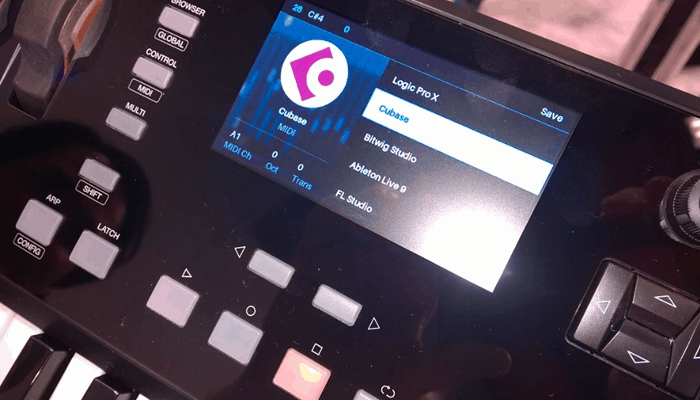
It is very likely that it will not display the actual name of the instrument here. FL Studio will recognize most instruments, and list them in this section once you connect them.

You should see your instrument listed under that section. Look at the Input section towards the lower half of the window. At the very bottom of the window that pops up, click the Rescan MIDI devices button.Ĥ). Go to Options menu at the top of FL Studio, and select MIDI Settings.ģ). Connect your physical instrument to your computer through a cable provided by the manufacturer.Ģ). Record using the controls and keys on your physical instrument with virtual sounds of the softwareġ). Use that instrument to control the software Get the latest articles directly into your inbox.Connecting an external instrument to a computer software allows you to: Press Play to kick of the recording, and you should see the output of the arpeggiator recording into the Synth1’s piano roll. Now press “Record” button and arm recording of Automation & Score. Now open the Synth 1’s Fruity Wrapper and set its MIDI Input Port to 2 (the number we used for our Input loopMIDI port). Click on the “Gear” icon to open BlueArp’s Fruity Wrapper and set Output Port also to 1. Open BlueArp and set its MIDI Output Port to 1 (the number we used for our Output loopMIDI port). BluArp itself requires a MIDI input, so I drew a simple 3-note pattern in the piano roll of its instrument channel. In my example I use BlueArp arppegiator into a track containing Synth1 synthesizer. Insert an instrument you want to transmit the MIDI data from into one instrument channel, and a receiving instrument into another channel.

(You may choose other port numbers, just make sure that output port is different from input). Set the loopMIDI Input MIDI port to 1, and Output to 2. Open FL Studio, go to Options → MIDI Settingįind the loopMIDI you created both in “Input” and “Output” sections. Once installed, click on loopMIDI icon in the system tray to bring up its window. Fortunately, there is a workaround that allows us to do just that.įor that you need to download and install Tobias Erichsen’s loopMIDI device. you can have an arpeggiator in one MIDI track transmitting notes into another track, where a synth would play it, but you won’t be able to record the notes arppegiator transmits.

This tutorial explains how to record the output of one MIDI track (for example, arpeggiator’s output) into another MIDI track.Īlthough FL Studio allow internal MIDI routing, it is not possible to record MIDI information which is being internally routed from one MIDI track into another.

MIDI routing in FL Studio via a MIDI loopback device


 0 kommentar(er)
0 kommentar(er)
